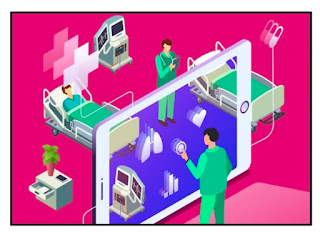SUDDEN INCREASE IN REMOTE TRIALS
SUDDEN INCREASE IN REMOTE TRIALS
What is meant by remote trials?
Remote clinical trials eliminate the contribution of clinical sites, keeping one central systematize site for the study, generally, one to which the head investigator is affiliated. Patients are enrolled and conduct vastly all trial procedures from the comfort of their own houses. Therefore, remote clinical trials are centred on a single clinical site, and patients partake in the study.
The typical patients of the 21st Century anticipate the experience of steering the healthcare system to be on the norm with other customer experiences enhanced by modern technologies. However, pharmaceutical commerce has principally remained quite behind the curve when implementing digital health technologies and interacting with patients within the ambience of clinical trials (CT). Remote trials also named digital, virtual, or mobile trials -provide an interesting turn on the use of digital health components to increase the patient’s understanding.
Influences of covid-19 on clinical trials
• More than 1,000 searches were suspended between March 1 and April 26, 2020, including 905 reported in clinical trials.gov, who COVID19 imposed the suspension.
• Cynthia Matossian, MD, an ophthalmologist in bucks country regularly conducts CTS and had no trial running during the pandemic shut down.
• Oracle polled ongoing CTS – polling respondents said COVID-19 has caused extended enrollment time (49%), modified protocols (45%), and halted protocols (41%).
• The Oracle census also revealed that while two-thirds of respondents were using remote data collection in their trials-patients apps, E-PRO, and wearable – nearly half of the data collection was just that; shifting gears would mean adopting for a new approach to manage, review, and interpret the data.
• Beginning last year, Rajneesh patil, IQVIA's vice president said, Digital technique and innovation, 60-70% of its customer glanced at incorporating these standardized, transparent, remote monitoring methods into their protocol design.
• The on-site working version converts the positions of the remote source assurance and the quality of the recordings is a vast major due to site access, he said. From the patient's perspective, having an easy-to-follow design protocol allows for broader involvement of participants, including people living in remote areas.
Pandemic accelerates trend towards remote trials
In 2020, 76% of more than 200 clinical trial sponsors said they executed most or all of their patient organizing remotely, from only 18% of respondents the earlier year, according to the 2021 State of the Industry report out-of Florence Healthcare. And in a poll conducted by Oracle Health Sciences of 250 experts at biopharma and medical device companies, as well as contract research Organizations, 76% of respondents, said that the pandemic had quickened their adoption of strategies for remotely conducting clinical trials.
One of the other great benefits of virtual climb, experts agreed that clinical test investigators to expand their scope.
• For Brennan and her collaborators, that meant opening up registration in their famotidine trial to COVID-19 patients throughout the New York metropolitan area, rather than limiting it to the patients who could easily get to long Island.
• In Manson’s study of Vitamin-D for treating and preventing COVID-19, her team enrolled patients from throughout the country, allowing them to enroll more people more rapidly than they could have done with a local study. The study was important because recruitment was time-sensitive, as the protocol involved treating patients within a week of diagnosis.
• More vital than enrollment efficiency, however, is the ability to acquire more distinct groups of participants. “The most significant aspect for a clinical trial to illustrate is both safety and efficacy in a representative sample of the population," said Christopher Koenen, chief medical officer and executive vice president of Japanese pharmaceutical company Otsuka.
• Nowadays, most trials fall short of this goal, he says, in large part, because they grab from surrounding regions to the sites hosting the study, and clinical trial centers in the US tend to be tracked down in urban centers on the East and West coasts are more inclined to be affiliated with academic institutions than rural practices. “By this, you are harming your patient population,” he says.
• With remote trials able to attain a greater geographical area, they are also attaining populations of various ethnic environments and socio-economic importance- the pitch to good quality, Koenen comments. “We are unfolding participation up to parts of the country, to parts of the community that have not been able to take part in the past and by the overall population” Brennan agrees. “The elegance of the virtual process is that it makes care vulnerable and equitable".
REFRENCES
1. Malke Asaad, Nilofer Khan Habibullah, Charles E. Butler. The Impact of COVID-19-19 on Clinical Trials. 2020; Ann Surg. Sep; 272(3): e222–e223.
2. Oracle Press Release. Survey: COVID-19-19 the Tipping Point for Decentralized Clinical Trials. Nov. 18, 2020.
3. Jef Akst. Pandemic accelerate trend towards remote trials. May 1, 2021





Comments